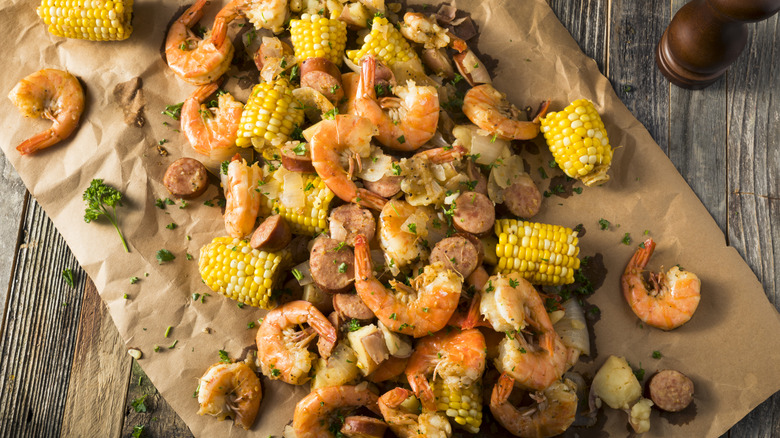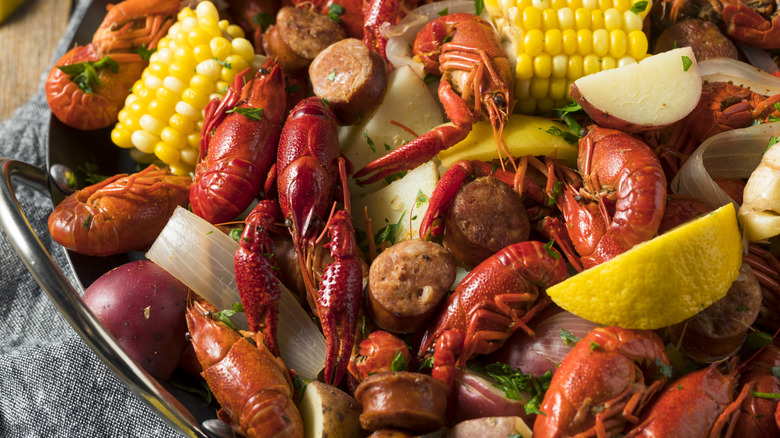The Biggest Mistake You Can Make When Making A Seafood Boil
When you're making a seafood boil, adding everything to the pot at once is only going to give you overcooked seafood, mushy vegetables, or undercooked potatoes. It's tempting since you're going to eat everything together anyway, and it might even feel like an efficient use of time ... but it's not. In fact, the biggest mistake you can make when preparing a seafood boil is to throw all your ingredients in at the same time.
Timing is everything. Each ingredient has its own cooking time, and adding them in the proper order ensures every component is perfectly done when served. For example, potatoes and corn require a longer time to cook, but shrimp and crab legs only need a few minutes. It may seem obvious, but you'd be surprised how many people let it kind of simmer all together like you would a beef stew.
A great seafood boil isn't just about the seafood; it's about layers of flavor built with the right timing and technique. There are a number of different types of seafood boils, but we'll stick with a classic take — start with the potatoes, then add corn and sausage, and finish with quick-cooking shellfish like shrimp, crab, and crawfish.
How to make a seafood boil the right way
A great seafood boil starts with a well-seasoned cooking liquid, so don't hold back on Old Bay, salt, garlic, halved lemons, and bay leaves — let everything simmer briefly to build flavor before adding anything. For the best results, cook ingredients in stages based on their cooking times. Potatoes need the longest, so give them a head start before adding heartier ingredients like corn and sausage, which absorb flavors beautifully.
When it's time for the seafood, clean everything well to avoid an unpleasantly gritty bite. Bivalves — like mussels and clams — cook quickly, and you'll know they're done when their shells open. Shrimp and crab legs go in last since they only need a few minutes. Just look for the shrimp to turn pink and opaque, signaling they're ready. Be cautious not to overcook, as seafood can turn rubbery fast.
For that iconic seafood boil presentation, drain everything and serve it family-style on a platter or spread it out over newspaper. Finish with melted butter, squeeze lemon juice over the top, grab your favorite dipping sauces, and get to cracking open and eating that crawfish!

